5 Hand-Washing Mistakes That Can Expose You to Norovirus or the Flu, Doctors Say
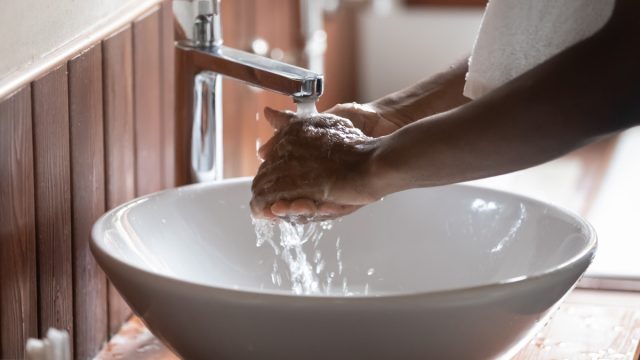
It’s that time of year when many of us are laid low with various viruses as we patiently (or perhaps not-so-patiently) await warmer weather. Once we’re able to open our windows to let the spring breeze in and socialize outdoors instead of being cooped up, it will help reduce our risk of getting sick. But in the meantime, being a stickler about hand-washing may help you avoid nasty bugs like norovirus (which is currently running rampant in the U.S.) and the flu.
Everyone knows how to wash their hands, right? If we didn’t get the message in kindergarten, then surely we know the drill after living through the COVID-19 pandemic. And yet, experts say many of us are still skipping steps and cutting corners when it comes to hand hygiene.
Best Life asked doctors and other healthcare pros to share their best tips on hand-washing, and to tell us what mistakes they see people make most often. Read on to find out whether you’re guilty of any of them—and then go wash your hands so you can stay healthy as you ride out these last days of frigid temps and flurries.
READ THIS NEXT: This Common Bathroom Habit Is a “Disaster” for Your Teeth, Dentist Warns.
1
Not using enough soap—or only using hand sanitizer.
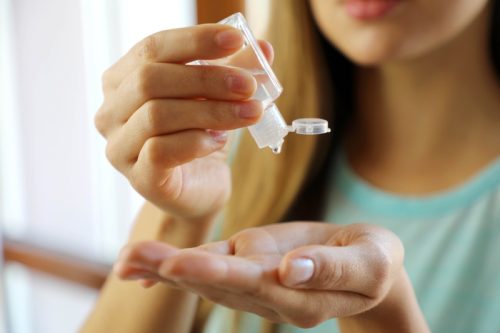
Don’t have time to wash your hands and think a squirt of hand sanitizer will be enough to do the job? Think again, says naturopathic primary care physician Devin Stone, ND, health advisor at biōReigns. “Alcohol does not completely kill all types of germs and also is not as effective as hand washing with soap and water,” he tells Best Life.
Stone also emphasizes the importance of using soap, and plenty of it. “It’s easy to skimp out on the lathering process,” he says. “However, you want to make sure you have enough soap to generously cleanse your hands. About a nickel size of soap usually can completely cover the surface of your hands.”
2
Not washing your whole hand.
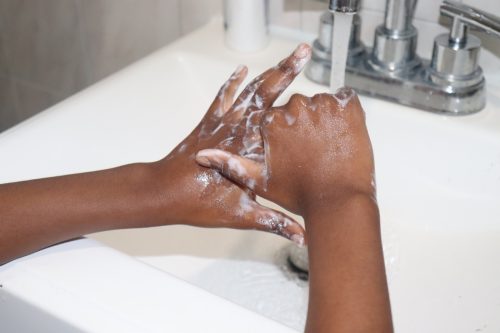
“One of the most common mistakes people make when washing their hands is to focus on the palms, missing everything else,” says Dawn Yeomans, PhD, a research principal at GOJO Industries. “Most people don’t realize that most bacteria on their hands are actually found on the fingertips and under the nails. That’s because the fingertips are your ‘touch-points’ where you transfer germs by touching contaminated items.”
“Other areas—like the webs between your fingers, around your cuticles, and underneath your fingernails and wearable items like rings and bandages—can harbor hidden germs and may even become germ breeding grounds since they are often missed when hand-washing is performed. It’s critical that hand-washing includes all of the surfaces on both sides of your hands, from the palm near your wrist to the tips of your fingernails,” she explains.
READ THIS NEXT: 90 Percent of Flu Hospitalizations Are Linked to These 4 Underlying Conditions, CDC Says.
3
Not scrubbing long enough.
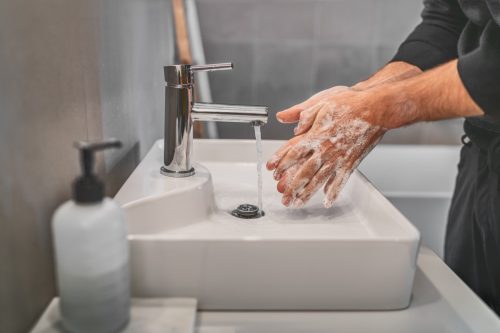
Roger Seheult, MD, a quadruple board-certified doctor and medical advisor for Intrivo and On/Go, recommends following the five-step method from the Centers for Disease Control (CDC): Wet, lather, scrub, rinse, and dry. If you thoroughly do each step, you’re likely to have washed your hands for the right amount of time.
“I definitely see people not washing their hands for long enough,” says Seheult. “The recommended time is 20 seconds—which doesn’t sound like a lot, but you’d be surprised at how long 20 seconds is when you are washing your hands. One way to remember is to sing ‘Happy Birthday’ twice briskly—that takes about 20 seconds.”
4
Touching the faucet after you wash your hands.
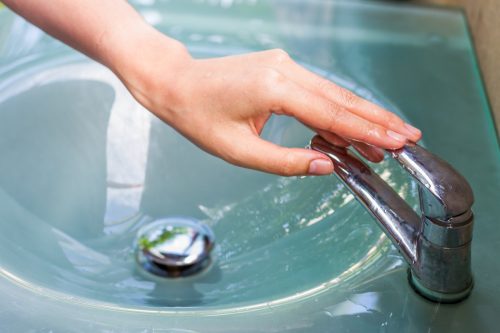
When you’re done scrubbing, you turn the water off, right? But doing so can potentially undo all the good you just did—especially if you’re in a public restroom. “Just think how many people with dirty hands are also touching the faucet,” Stone warns. If you live with other people, this can be true at home, too.
What’s the alternative? After all, you can’t just leave the water running. “If at all possible, dry your hands with a clean towel. Then use the towel to turn off the faucet,” Stone tells Best Life.
For more health news sent directly to your inbox, sign up for our daily newsletter.
5
Using a dirty towel to dry your hands.
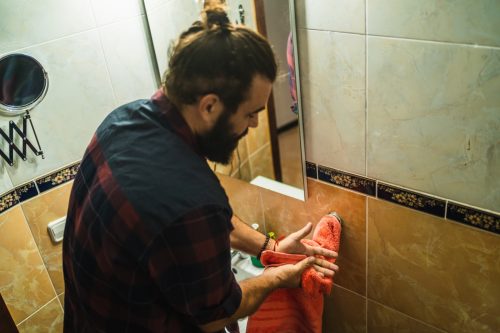
How many times have you given your hands a quick shake, shrugged, and called it good enough after washing your hands? Maybe the paper towel dispenser was empty, or you were in a rush—whatever the case, we’ve all been there. But Dung Trinh, MD, founder of the Healthy Brain Clinic, urges people not to skip this step. “Wet hands are more likely to spread germs, so make sure you dry them completely using a clean towel or air dryer,” he says.
And clean is the key word there. “A dirty towel that is reused many times can harbor many microbes,” Stone adds. “It’s important to dry your hands with a clean towel or air dry. You don’t want to dirty your hands after you’ve just spent all this time cleaning them.” If you’re at home, make sure the hand towel hanging near your sink is freshly laundered—when’s the last time you washed yours?